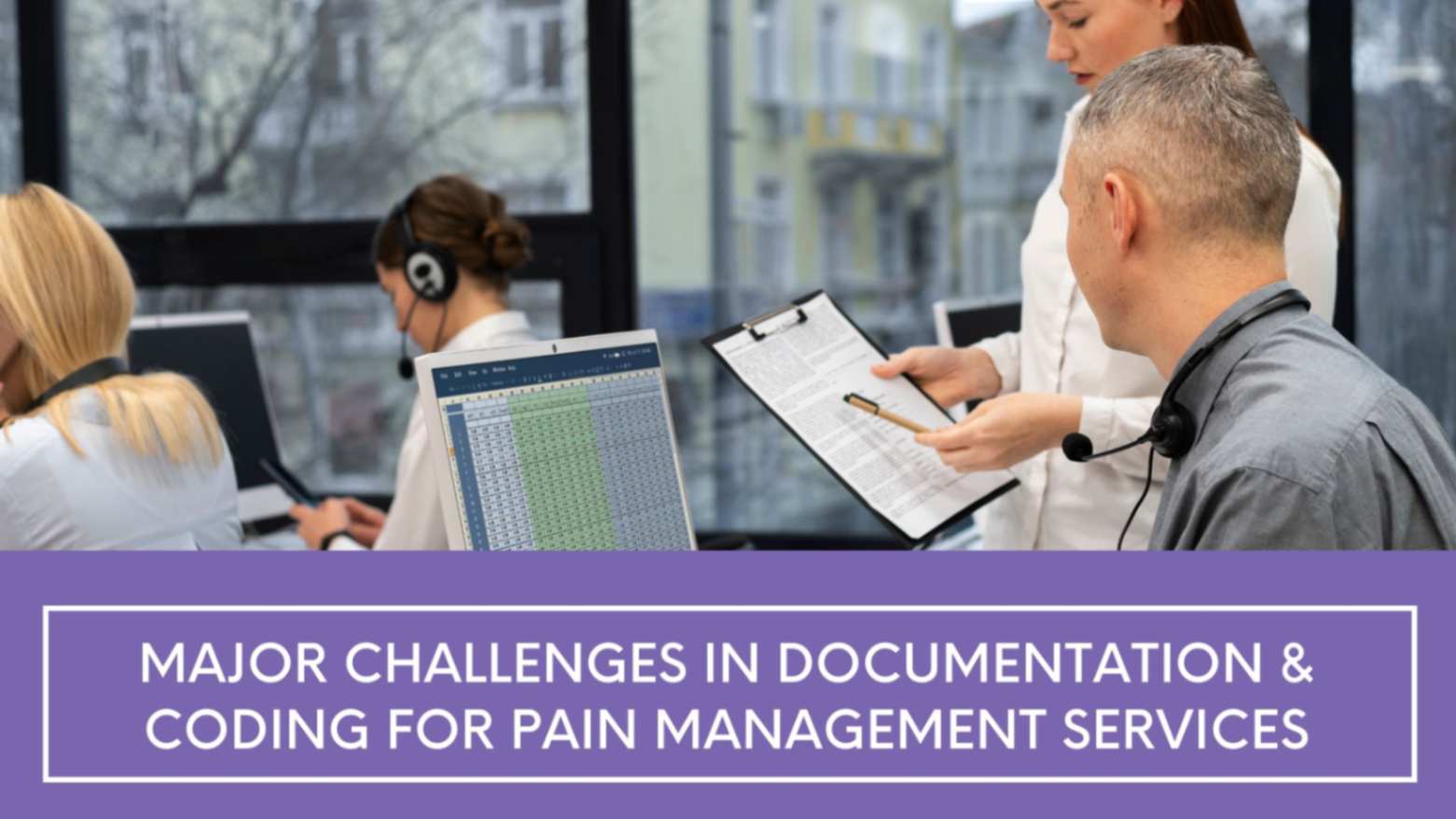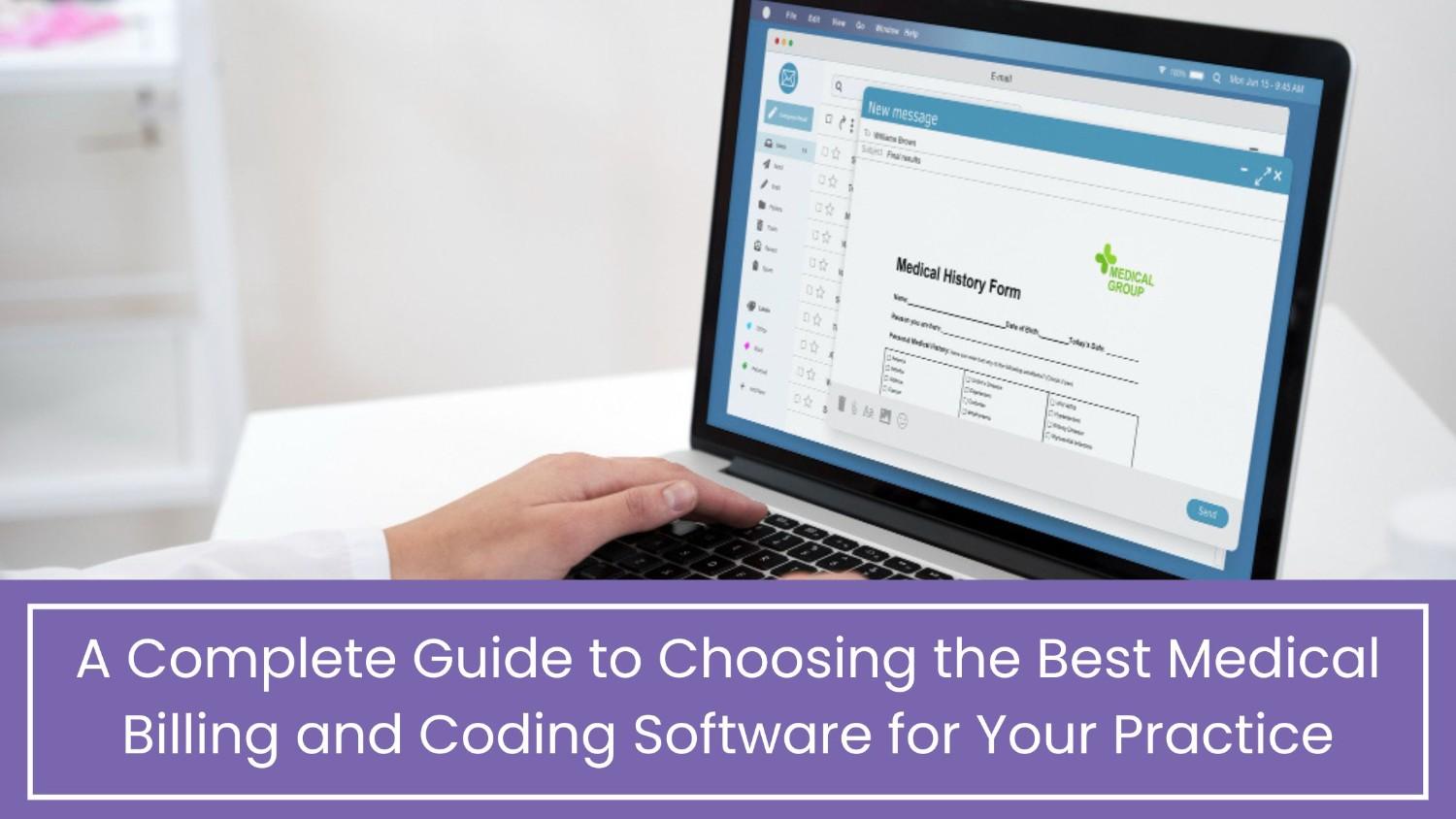Major Challenges in Documentation and Coding
Regulations on the field of interventional pain management are imposed by the federal government, medical boards, state government as well as many other regulatory agents. Proper documentation of all medical services with corresponding medical codes and appropriate bills are important aspects of interventional pain management. The financial feasibility of any interventional pain management practice is severely impacted by every change that occurs in the regulations governing this field.
Facing challenges related to documentation, medical billing or coding is unavoidable for any physician with a private practice. In this blog, we discuss the major challenges in documentation and coding for pain management services and the solution to each challenge.
Table of Contents
Challenge 1: Portraying The Location Of Pain Accurately
While medical coders go through rigorous training to familiarize themselves with the intricacies of medical coding and billing and the numerous codes, they may be less knowledgeable in comparison to the clinical aspects of the practices. Physicians may write in the exact anatomical location of the pain in patients suffering from chronic pain in their medical documentation but failure to precisely reflect this information in medical codes may give insurance providers more than enough reason to deny reimbursement claims.
Solution: Medical coders involved in the interventional pain management sector must make themselves familiar with the anatomical details such as levels of the vertebral column, structure of joint facets, and innervations of specific locations. Portraying this information accurately from medical notes to codes requires a deeper knowledge of human anatomy. This can be achieved by training medical coders in short courses that teach the basics of medical anatomy. This is where Practolytics gears up, focusing on coder education in relation to the Pain Management specialty coding.
Challenge 2: Discrepancies in Documentation
Physicians are often wary of performing any duties that fall outside of direct medical care such as writing medical history and notes. This can lead to discrepancies between procedures performed or actual treatment provided and the documents describing the procedures. Any single missed point or mistake can lead to error in billing, and therefore increase the likelihood of not just claim denials but also increases risks of liability to criminal negligence or incompetence.
Solution: Physicians themselves or their financial overseers must educate each medical employee in their practice regarding the consequences of errors in documents such as loss in revenue, impact on physician earning, and criminal liability. Practolytics ensures proper training and education to the office staff and other involved individuals, making sure there are no process gaps and everyone stays on top of the information.
Challenge 3: Payer Policies, LCDs, and NCDs
Policies are constantly being updated by the CMS as well as by other insurance providers. After information on the updates is released publicly, it is the responsibility of the healthcare providers to change or update their medical billing process to follow the new policies. Failure to do so adversely impacts only the healthcare providers.
Solution: All medical practices must have a team specifically designated to deal with the financial aspect of the practice. Such a team should be on top of any policy changes that may be coming in the future and be prepared to train themselves and their team members to deal with the changes. We, at Practolytics, have a robust mechanism of tracking the updates and aligning practices to the ever changing guidelines from the insurances, thus ensure a healthy revenue flow to the practices.
Challenge 4: Reflecting Medical Necessity
In interventional pain management, the most important deciding factor for reimbursement is the medical necessity for any medications or procedures. But for patients with chronic pain and other related illnesses, deciding the medical necessity of any treatment and then reporting it in the medical records can be a difficult task. Insurances may reject any reimbursement claims for treatments that do not justify the medical necessity.
Solution: The severity or degree of pain must be portrayed accurately in order to justify the treatment or care provided. Other information such as the history of previous trauma or imaging findings can be supplemented with the pain description to state medical necessity.
Challenge 5: Difficulty in Specifying Degree and Type Of Pain
Pain can be highly variable in nature, it can be of a pinching, stabbing, throbbing, dull or sharp nature. Furthermore, pain can be acute, chronic, acute on chronic, or of sudden onset. Translating the nature of the pain into codes can be a challenge, and the inability to combat this challenge may result in errors and discrepancies with documentation as well as billing.
Solution: Physicians should ensure that they get the exact sense of the patient’s pain and document it as precisely as possible. This will enable coders to select the corresponding code to match the pain and avoid any unnecessary issues related to this. ICD-10-CM has specific codes to describe the nature of pain.
Globally, millions of people suffer from chronic pain. The estimated cost for the management of chronic pain in the US alone is more than $600 billion. Interventional pain management can be a stressful area in healthcare as patient volume is constantly rising. Managing chronic pain can also be tricky as patients may often not respond adequately to treatment.
When medical practitioners are further burdened by the financial aspects of running a practice, it can be extremely frustrating and stressful as you may be constantly facing financial losses and have a poor income due to a lack of proper revenue management. We, at Practolytics, are experienced in dealing with interventional pain revenue cycle management. We have handled the finances of numerous other practices and helped them succeed. So, why not unburden yourself and help us to help you?
ALSO READ – 5 Smart Tips for Improving Revenue Cycle Management
Talk to Medical Billing Expert Today — Get a Free Demo Now!







